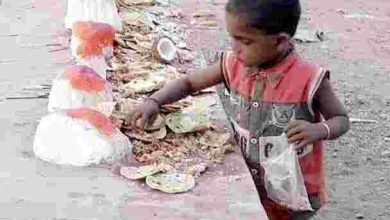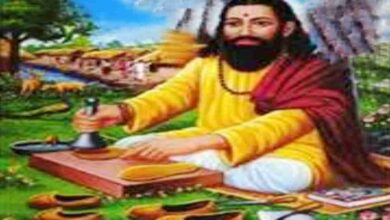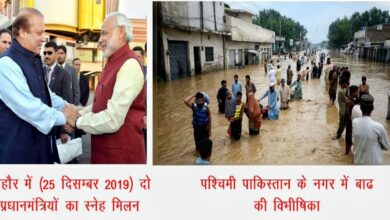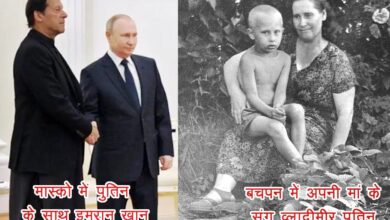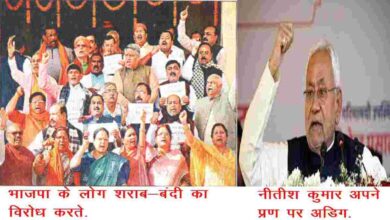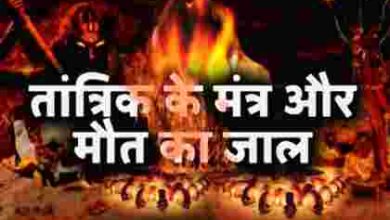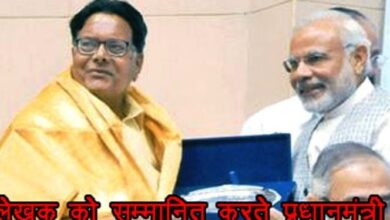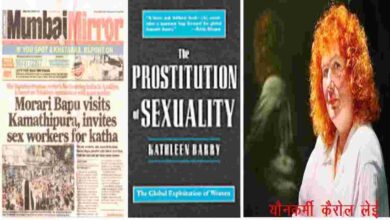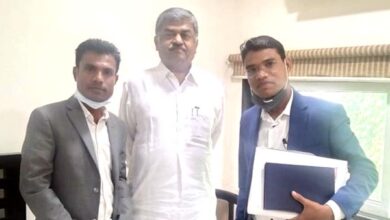देश में हिंसक होते युवा आंदोलन desh mein hinsak hote yuva aandolan

©डॉ. सत्यवान सौरभ
परिचय– हिसार, हरियाणा.
(हरियाणा, उत्तर प्रदेश और बिहार में भारी बेरोजगारी होने के साथ सरकारी नौकरियों की कमी की वजह से, युवाओं में ज्यादा हताशा और आक्रोश है। लेकिन यह स्थिति पूरे देश की भी है। ग्रुप-डी की नौकरी के लिए करोड़ों लोग अप्लाई कर रहें है। नौकरी के इच्छुक करीब 25 प्रतिशत युवाओं को कोई काम नहीं मिल रहा है। दशकों से स्थिति लगातार बदतर होती जा रही है, खासकर एक ऐसे देश में जहां आधी से अधिक आबादी 25 से कम उम्र की है। भारत को हर महीने एक लाख रोजगार पैदा करने की जरूरत है जबकि इसकी अर्थव्यवस्था कभी भी इस मांग को पूरा करने की स्थिति में नहीं आई।)
गोल्डस्टोन ने लिखा है, “युवाओं ने पूरे इतिहास में राजनीतिक हिंसा में एक प्रमुख भूमिका निभाई है,” और एक युवा उभार कुल वयस्क आबादी के सापेक्ष 15 से 24 युवाओं का असामान्य रूप से राजनीतिक संकट से ऐतिहासिक रूप से जुड़ा हुआ है। पिछले कुछ वर्षों में, युवा हिंसा के कारण जान-माल के नुकसान की घटनाओं में वृद्धि हुई है – चाहे वह वर्तमान अग्निपथ योजना से जुड़ा मुद्दा हो, झारखंड में बच्चे के अपहरण की अफवाह हो, यूपी और राजस्थान में गौरक्षकों द्वारा, कश्मीर में हिंसक भीड़ द्वारा या आरक्षण को लेकर हो। हरियाणा में जाट भीड़ की हिंसा को राज्य द्वारा जिम्मेदारी के विस्थापन के प्रतिबिंब के रूप में देखा जा सकता है, जो लोगों को कानून को अपने हाथों में लेने के लिए दोषी ठहराता है, और जो राज्य की निष्क्रियता पर अपने कार्यों को सही ठहराते हैं।
आर्थिक संघर्ष कहीं न कहीं इस तरह की युवा हिंसा के पीछे एक बड़ी वजह है, भारत के राजनीतिक परिदृश्य में देखें तो जातीय-धार्मिक उग्रवाद, संगठित अपराध और यौन हमले लगातार बढ़ते जा रहे हैं। इस पर थोड़ा गौर करने की जरूरत है कि आखिर संघर्ष की वजह क्या है? विश्व बैंक के आंकड़े बताते हैं कि 15-24 आयु वर्ग के चार भारतीयों में से एक से भी कम श्रम बल का हिस्सा होते हैं और नौकरी के इच्छुक करीब 25 प्रतिशत युवाओं को कोई काम नहीं मिल रहा है। दशकों से स्थिति लगातार बदतर होती जा रही है, खासकर एक ऐसे देश में जहां आधी से अधिक आबादी 25 से कम उम्र की है। भारत को हर महीने एक लाख रोजगार पैदा करने की जरूरत है जबकि इसकी अर्थव्यवस्था कभी भी इस मांग को पूरा करने की स्थिति में नहीं आई। जैसा मानव विज्ञानी क्रेग जेफरी कहते हैं, ‘जीवन में कुछ घटित होने का इंतजार करना’ ही अनेक युवा भारतीयों का एकमात्र काम रह गया है। सोशल मीडिया के माध्यम से प्रेरित अफवाहें फैलती हैं जो एक गुमनाम बल गुणांक के रूप में कार्य करती हैं।
भीड़ की हिंसा और सतर्कता इसलिए होती है क्योंकि अपराधी इससे बच निकलने की उम्मीद करते हैं। राज्य की प्रतिरोधक क्षमता को विश्वसनीय नहीं माना जाता है, खासकर जब हिंसा के दृश्य पर पुलिसकर्मियों को केवल स्टैंड के रूप में प्रस्तुत किया जाता है। कानून और व्यवस्था की स्थिति का सामान्य क्षरण – सामाजिक अव्यवस्था के लिए अपर्याप्त प्रतिक्रिया, और सतर्क हत्याओं में शामिल लोगों पर आक्रामक रूप से मुकदमा चलाने में असमर्थ, भीड़ की हिंसा को और प्रोत्साहित करती है। ऐसी घटनाओं के मूक गवाह रहने वाले लोग भी उतने ही जिम्मेदार होते हैं जब वे क्रॉस फायर में फंसने के डर से ऐसी घटनाओं के प्रति अपनी अस्वीकृति व्यक्त करने से दूर रहते हैं। जब राज्यों में लिंचिंग की घटनाएं होती हैं तो न्याय की कमी होती है, इसके लिए जिम्मेदार लोगों को जवाबदेह नहीं ठहराया जाता है। लोकतंत्र की विकृति है, जो लोगों को हिंसा पर पूर्ण एकाधिकार प्रदान करती है।
भीड़ की हिंसा भारत में मौलिक अधिकारों में से एक “जीवन का अधिकार” (अनुच्छेद 21) में निहित गरिमापूर्ण और सार्थक अस्तित्व के अस्तित्व के लिए खतरा है। इसलिए, व्यापक पुलिस सुधार और कुशल आपराधिक न्याय वितरण प्रणाली की आवश्यकता है जो लोगों को न्याय के नाम पर भीड़ हिंसा का सहारा लेने से रोकती है। यहाँ तक कि जब राष्ट्र-राज्य युवाओं के नेतृत्व वाली हिंसा को कुचलने में सफल होते हैं, तो अनुभव से पता चलता है कि उन्हें नई भाषाएं मिलती हैं जिनमें खुद को अभिव्यक्त किया जा सकता है। ट्यूनीशिया को अरब वसंत के बाद लोकतांत्रिक सुधार के एक मॉडल के रूप में प्रतिष्ठित किया गया था, लेकिन यह इस्लामिक स्टेट के साथ-साथ यूरोप में अवैध प्रवासियों के लिए जिहादियों का सबसे बड़ा एकल प्रदाता साबित हुआ। सीरिया और लीबिया जैसे देशों में, अरब वसंत ने एक उग्र गृहयुद्ध का नेतृत्व किया – जो स्वयं क्रांतियों की तरह ही था – हिंसा से आसानी से बहकाने वाले एक युवा समूह ही था।
हरियाणा, उत्तर प्रदेश और बिहार में भारी बेरोजगारी होने के साथ सरकारी नौकरियों की कमी की वजह से, युवाओं में ज्यादा हताशा और आक्रोश है। लेकिन यह स्थिति पूरे देश की भी है। ग्रुप-डी की नौकरी के लिए करोड़ों लोग अप्लाई कर रहें है। सरकारी संपत्ति को नुकसान पहुंचाने वालों के खिलाफ पुलिस में मामला दर्ज हो जाए तो उन्हें सरकारी नौकरी के लिए अयोग्य घोषित किया जा रहा है। लेकिन यह बहुत ही अजीब है कि आंदोलन और हिंसा की सीढ़ी से राजनीति में शामिल लोग विधायक, सांसद और मंत्री बन जाते हैं। सत्ताधारियों के वी.आई.पी. कल्चर और उन पर कानून नहीं लागू होने से बेरोजगार युवाओं में कुंठा और हिंसा बढ़ रही है। ऐसी घटनाएं भविष्य में नहीं हो, इसके लिए राजनेताओं को कानून के दायरे में अनुशासित होने की अच्छी मिसाल पेश करनी होगी।
हालांकि, उदाहरणों की कोई कमी नहीं है, जहां राज्य हिंसक युवा लामबंदी से अलग हो गया है। पूर्व पुलिस अधिकारी प्रकाश सिंह की 2016 की हरियाणा हिंसा की आधिकारिक जांच से पता चला कि पुलिस बल खुद जाति के आधार पर बिखरा हुआ है। बड़े पैमाने पर कम संसाधन वाली, भारत की पुलिस प्रणाली पहले से ही देश के बड़े हिस्से में कानून लागू करने के लिए संघर्ष कर रही है। नई चुनौतियों का सामना करने की प्रणाली की क्षमता सवालों के घेरे में है। सामाजिक कश्मीर और उत्तर-पूर्व में, युवा लामबंदी ने जातीय-धार्मिक हिंसा को भड़काने में महत्वपूर्ण भूमिका निभाई है। युवाओं से संबंधित गिरोह संस्कृति के साथ-साथ हिंसक अपराध में भी वृद्धि हुई है। भारत के युवा संकट के साथ जुड़ना भारत की राष्ट्रीय सुरक्षा प्रणाली का सबसे बड़ा एकल कार्य होना चाहिए।

Dr Satywan Saurabh
Violent youth movement in the country
(Due to the lack of government jobs with huge unemployment in Haryana, Uttar Pradesh, and Bihar, there is more frustration and resentment among the youth. But this situation is also in the whole country. Crores of people are applying for Group-D jobs About 25 percent of the job seekers are not getting any work. The situation has been getting worse for decades, especially in a country where more than half of the population is under 25. India gets one lakh every month. need to generate employment while its economy has never been in a position to meet this demand.)
“Youth has played a major role in political violence throughout history,” Goldstone wrote, “and a youth bulge has historically been associated with political crisis, an unusually high number of youth 15 to 24 relative to the total adult population.” In the past few years, there has been an increase in incidents of loss of life and property due to youth violence – whether it is an issue related to the current Agneepath scheme, rumored child abduction in Jharkhand, by cow vigilantes in UP and Rajasthan, violent in Kashmir Be it by the crowd or by reservation. The Jat mob violence in Haryana can be seen as a reflection of the displacement of responsibility by the state, which blames the people for taking the law into their own hands, and who justifies their actions on the state’s inaction.
Economic conflict is one of the major reasons behind such youth violence, ethnoreligious extremism, organized crime, and sexual assault are on the rise in India’s political landscape. It needs a little attention that what is the reason for the conflict? World Bank figures show that less than one in four Indians in the 15-24 age group are part of the labor force and about 25 percent of job-seeking youth are not finding any work. The situation has been getting worse over the decades, especially in a country where more than half the population is under the age of 25. India needs to generate one lakh jobs every month while its economy has never been in a position to meet this demand. As anthropologist Craig Jeffrey puts it, ‘waiting for something to happen in life’ has remained the sole task of many young Indians. Motivated rumors spread through social media that act as an anonymous force coefficient.
Mob violence and vigilantism occur because criminals hope to escape from them. The state’s deterrence is not considered credible, especially when policemen are presented as mere stands at the scene of violence. The general erosion of the law and order situation – an inadequate response to social disorder, and the inability to aggressively prosecute those involved in vigilante killings, further encourage mob violence. People who are silent witnesses of such incidents are equally responsible when they refrain from expressing their disapproval of such incidents for fear of being caught in the crossfire. When incidents of lynching happen in the states there is a lack of justice, those responsible are not held accountable. Democracy is a perversion, which gives people a monopoly on violence.
Mob violence is a threat to the existence of a dignified and meaningful existence enshrined in the “right to life” (Article 21), one of the fundamental rights in India. Hence, there is a need for comprehensive police reforms and an efficient criminal justice delivery system that deters people from resorting to mob violence in the name of justice. Even when nation-states succeed in quelling youth-led violence, experience shows that they find new languages in which to express themselves. Tunisia was hailed as a model of democratic reform after the Arab Spring, but it proved to be the largest single provider of jihadists to illegal immigrants in Europe, along with the Islamic State. In countries such as Syria and Libya, the Arab Spring led to a raging civil war – similar to the revolutions themselves – with a youth group easily swayed by violence.
Due to the lack of government jobs coupled with huge unemployment in Haryana, Uttar Pradesh, and Bihar, there is more frustration and resentment among the youth. But this is also the situation in the whole country. Crores of people are applying for Group D jobs. If a case is registered with the police against those who damage government property, they are being disqualified for government jobs. But, strangely, people involved in politics become MLAs, MPs, and ministers by the ladder of agitation and violence. VIPs of the ruling party Frustration and violence are increasing among unemployed youth due to culture and non-implementation of laws on them. For such incidents not to happen in the future, politicians have to set a good example of being disciplined within the ambit of the law.
However, there is no dearth of examples where the state has shied away from violent youth mobilization. Former police officer Parkash Singh’s official investigation into the 2016 Haryana violence revealed that the police force itself is divided based on caste. Largely under-resourced, India’s police system is already struggling to enforce the law across large parts of the country. The system’s ability to meet new challenges is under question. Social In Kashmir and the North-East, youth mobilization has played an important role in fueling ethnoreligious violence. Along with youth-related gang culture, there has also been an increase in violent crime. Connecting with India’s youth crisis should be the single biggest task of India’s national security system.


